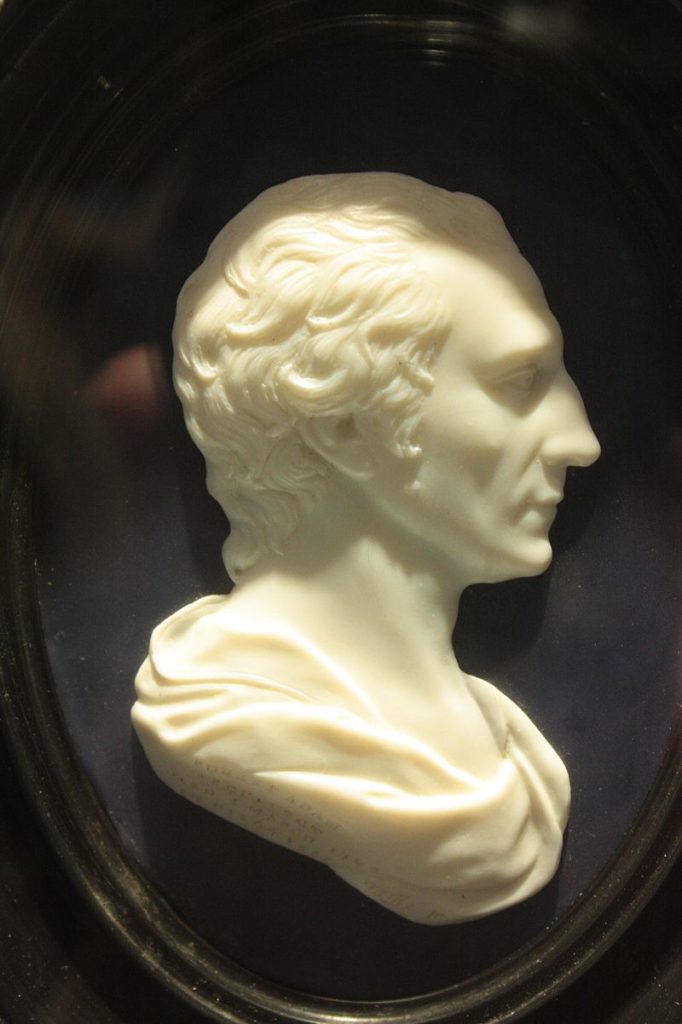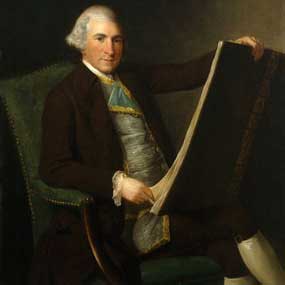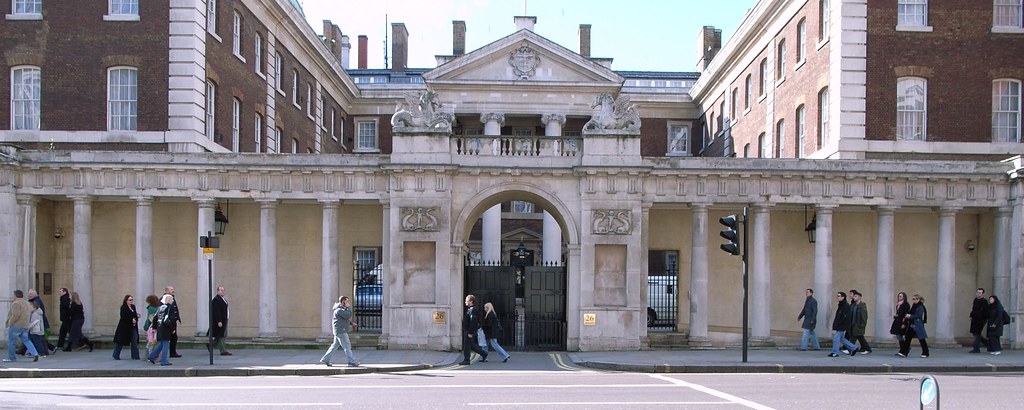British architect Robert Adam was the leading pioneer of the neoclassic style in the late 18th century. His graceful, elegant work is based on ancient Rome and Renaissance motifs.

Image source: https://en.wikipedia.org
About Adam’s Life
Robert Adam was born in 1728, in Scotland. His father, William was a bricklayer and architect, considered the leading designer of country houses in Scotland during that period. Both of his brothers, James and John, were also architects. However, Robert was the most successful of the three. Further, many say he is the greatest architect of the late eighteenth century. From 1760 until his death, he was the leader of the neoclassical revival in England and Scotland. During this period, he completed many large orders from private clients and had a profound stylistic influence, called the style of Adam.

Image source: https://en.wikipedia.org/wiki/Robert_Adam#/media/File:Robert-adam.jpg
His Major Architectural Works
- Admiralty Screen (1760): Adam’s first important work in London. In 1762, he redesigned the interior of Syon House and produced an important plan that proposed filling an old center court with a vast, domed, pantheon-like hall. Additionally, the entrance hall of Syon is one of the most significant Neoclassical interiors in England.
- Mersham-le-Hatch (1762–72)
- Lansdowne House (1762–68)
- Luton Hoo (1766–74)
- Newby Hall (1767–80)
- Kenwood House (1767–68)

Image source: https://search.creativecommons.org/photos/7e8545cd-07d8-4088-9b78-51adce30f6da by stevecadman
- Kedleston Hall (1757–1759): An example of an exterior in the architectural style of Adam. He was the first architect who applied elements of Roman-style to residential architecture and designed a domed interior space and used the theme of a triumphal arch.

Image source: https://search.creativecommons.org/photos/2cbaa709-1353-41ba-80fe-60ad4e63fa56 by rickmassey1
The Brothers designed three of the most significant London residential buildings in the 1770s that are excellent examples of their mature style:
- Wynn House (1772–74)
- Home House (1775–77)
- Derby House (1773–74)
His Major Furniture Works
He was also a furniture designer, and designed various products from organ cases and sedan chairs to salt shakers and door fittings. Further, Adams designed furniture to blend in with the rest of the house and the interior. Cabinetmaker George Hepplewhite popularized Adam’s style. To him, everything, even the smallest detail, is harmonious and subordinated to a single scheme.

Image source: https://en.wikipedia.org/wiki/Robert_Adam#/media/File:Bookcase,_Robert_Adam_(1728-1792),_1776_-IMG_1604.JPG
Features of His Style
Adam had an innovative approach to work that departed from the strict rules of neoclassicism and Palladianism. He created aesthetically lighter and more graceful works and experimented with color and decor. His style has since been called the Adamescque or the Adam style, or the Adam brothers style at the time.
Moreover, Adam’s theory about holistic design defined his style. Most neoclassical architecture was focused only on the exterior. The structure’s façade embraced Classical Roman and Greek elements, but not the interior. Robert Adam’s projects are unique because he designed the entire building as a whole, from architecture to interior details. Additionally, this is the concept of integrated aesthetics. Also, Adam introduced classic elements into interior design.
Info sources:
http://www.newworldencyclopedia.org/entry/Robert_Adam
http://study.com/academy/lesson/robert–biography-architecture.html
